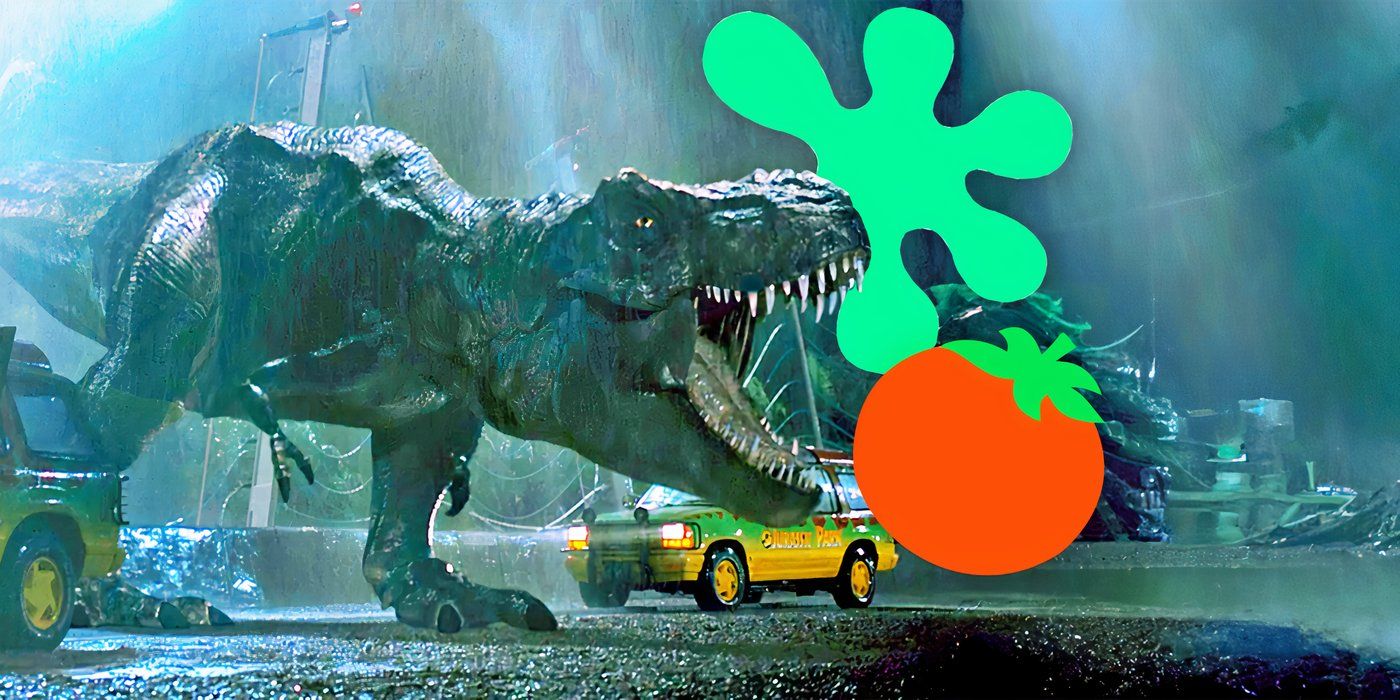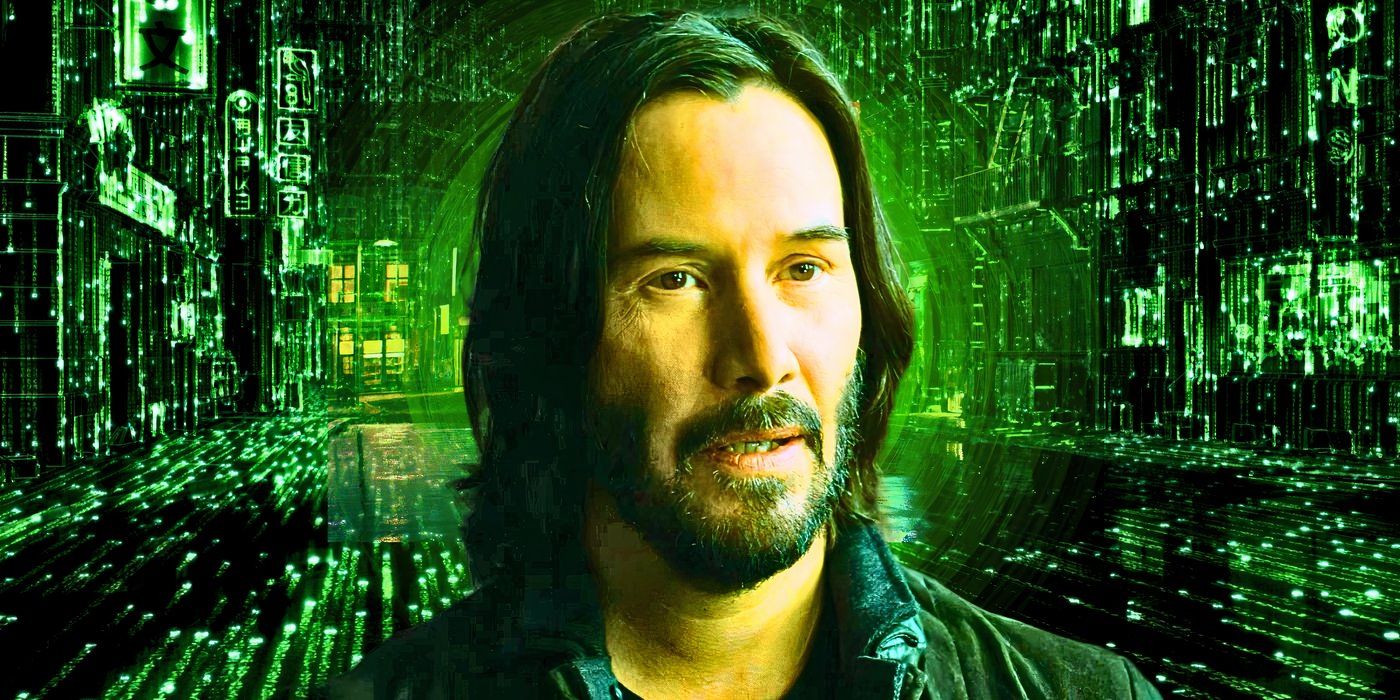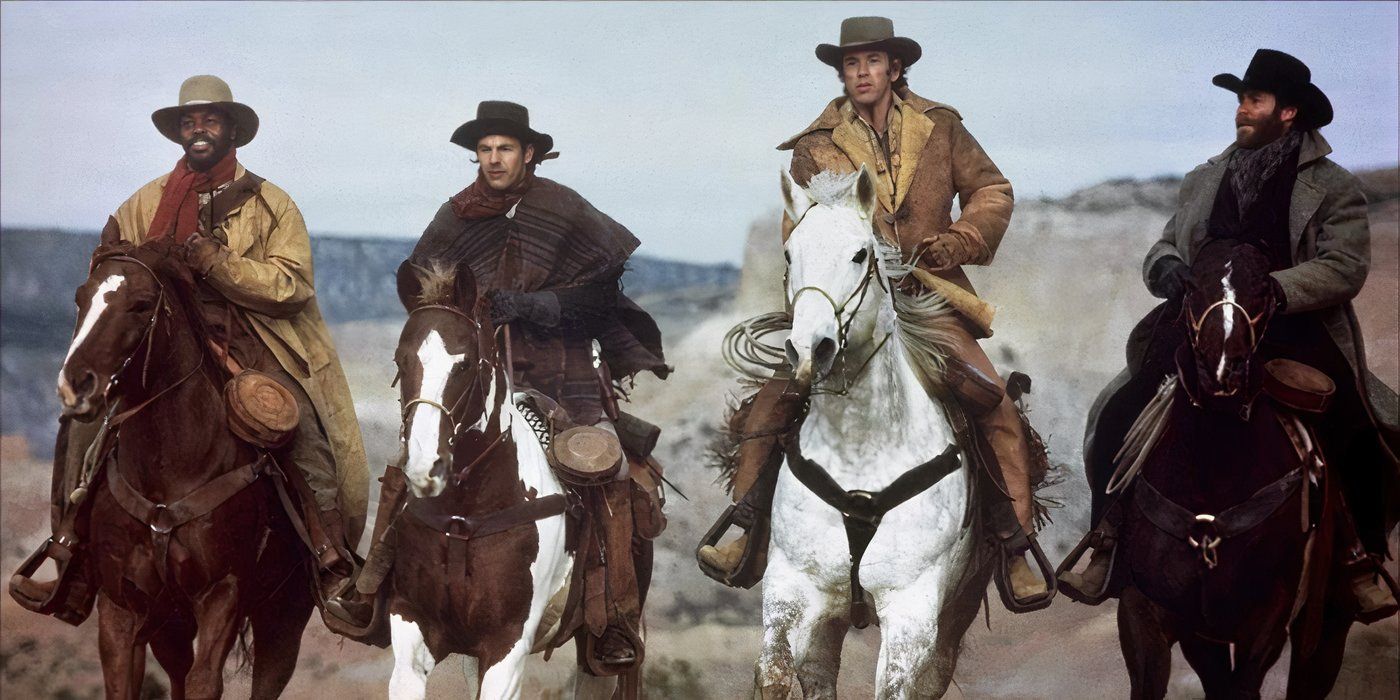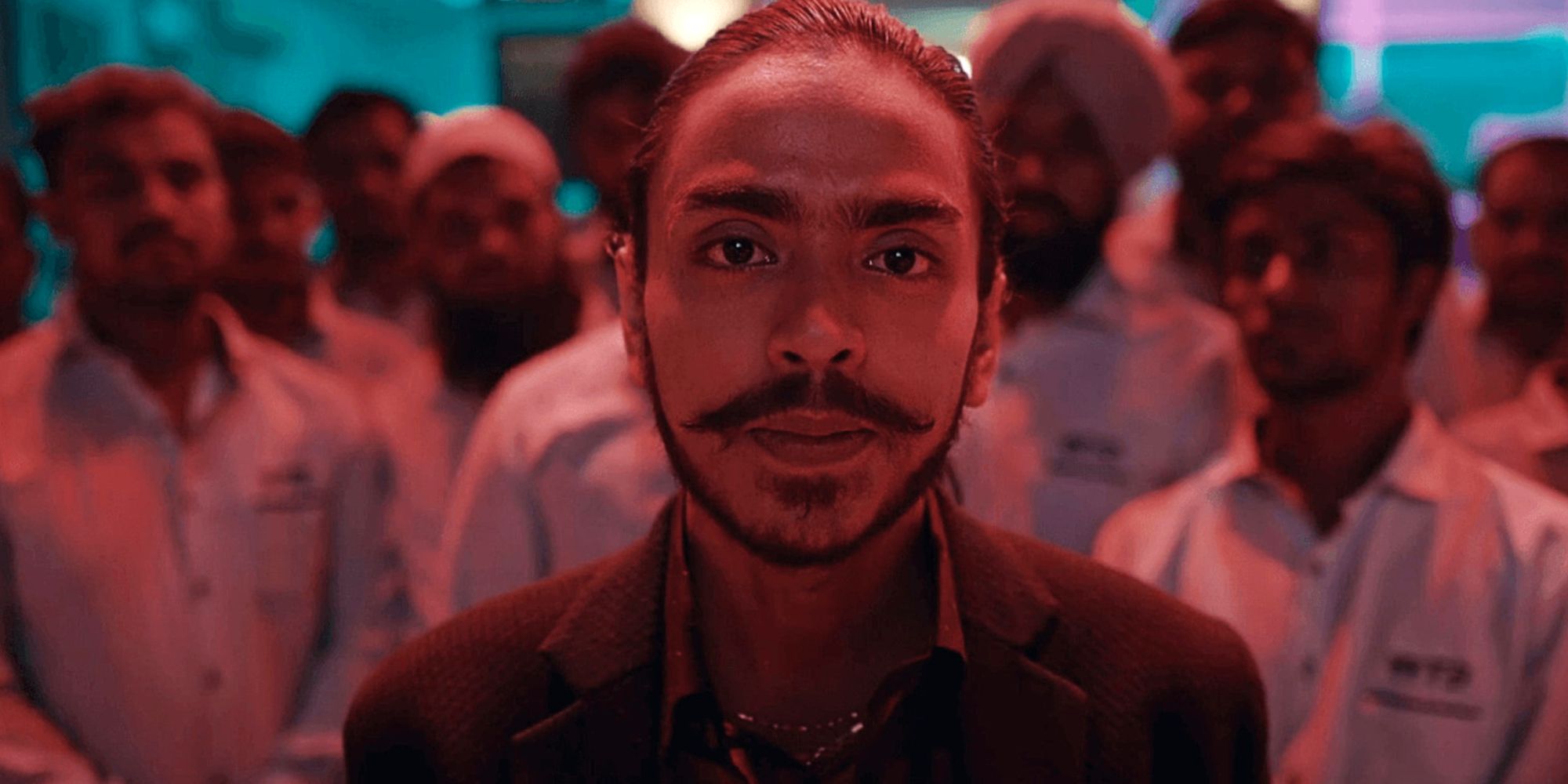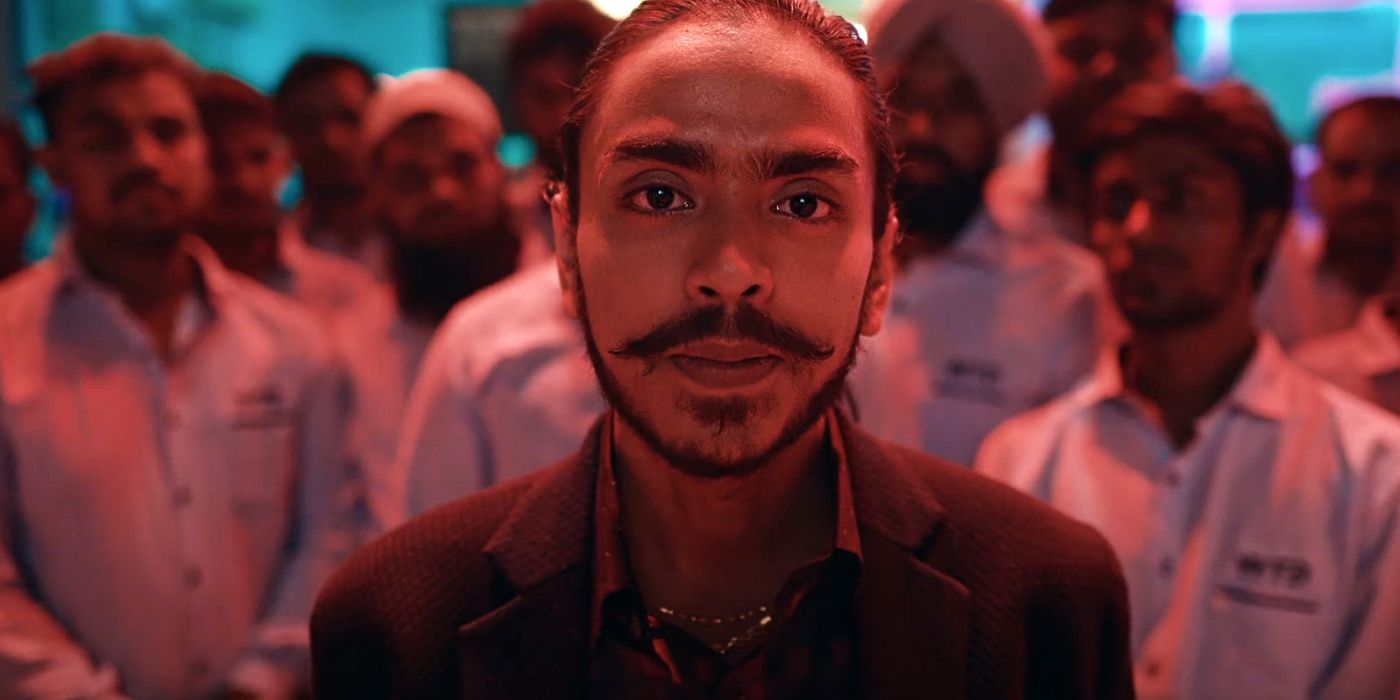Warning! Spoilers ahead for The White Tiger
Ramin Bahrani’s The White Tiger ends on a fiery, roaring note, while delving into how greed, politics, class divide and corruption contribute to a broken system that forces millions to struggle for survival. The Netflix movie The White Tiger is centered on Balram (Adarsh Gourav), who narrates a dark, epic tale of strife and ambition, chronicling his rise from abject poverty to being a successful entrepreneur. Starring Rajkummar Rao, Priyanka Chopra-Jonas, and Mahesh Manjrekar, The White Tiger debutted in theaters on January 13 2021, and was released on Netflix on January 22, 2021.
The White Tiger opens as a bildungsroman-of-sorts, wherein an adult and now-successful Balram details the vast and consuming poverty of his upbringing, which he dubs as “The Darkness.” Born in the village of Laxmangarh in India, Balram is forced to abandon his dreams of continued education when his father, a rickshaw-puller, dies of tuberculosis, leaving the family in immense debt. However, Balram aches for more, wishing to break free of the vicious cycle of birth-poverty-death. Emboldened by fiery ambition and cunning, Balram finds a way to work as a driver for Ashok (Rao), the America-returned son of an affluent landowner.
Going above and beyond to make himself indispensable to his masters, Balram navigates his path deftly and ruthlessly, while silently battling the cruel hypocrisy and outright brutality of the rich. However, one night of utter betrayal jars Balram from within, awakening a fire that had laid trapped beneath societal conditioning and caste divide for years. Here’s the significance of the ending and what it means within the larger narrative framework of The White Tiger, explained.
Is The White Tiger Based On A Novel?
The White Tiger is based on the 2008 Man Booker Prize-winning novel of the same name, written by Aravind Adiga. Adiga examines how those deemed by society as belonging to the “lower” class are subject to casteism, income inequality, poverty, and corruption, which work hand-in-hand to further entrap them in a maze with no escape. It is interesting to note that Adiga dedicated The White Tiger to Bahrani, whom he had met while attending Columbia University. While Bahrani molds Adiga’s source material deftly and follows it closely, he makes a few adjustments for the sake of translating the story to cinema.
What Happens to Balram in the Aftermath of the Gruesome Accident?
One night, Ashok and his wife, Pinky (Chopra-Jonas), celebrate the latter’s birthday party at a pub. Whilst drunk, Pinky takes the steering wheel, while Balram sits in the backseat, as the car speeds through the desolated streets of Delhi. Sloshed and distracted, Pinky ends up hitting and killing a homeless child, while Balram urges the panicked couple to not call the authorities, as it would only implicate Pinky further. However, the next day, Ashok’s father and uncle arrive, and the family decides that Balram needs to take the fall, making him sign a legal declaration that it was he who was responsible for the accident. This scene is particularly jarring, with the camera focused on a close-shot of Balram’s face, which brims with a sense of painful betrayal and slow-building rage. Soon after, despite the fact that Balram signs the confession without asking for anything in return, he is brutally degraded by the family with the exception of Pinky, who stands up for him when he is kicked in the face by Ashok’s father.
The White Tiger employs animal imagery and symbolism to characterize the various kinds of people that exist in the world of privilege, which is a lens through which the titular character interprets the world. Ashok’s father, a tyrannical landowner, is characterized as The Stork, as he thrived on corruption and the hard-earned income of poor villagers, while bribing politicians in order to evade tax norms. Similarly, Ashok’s uncle, The Mongoose, treats Balram with consistent cruelty, willing to go to any lengths in order to preserve the family. Finally, there’s Balram himself, who becomes the sacrificial Lamb in the aftermath of the accident, forced to succumb to the self-serving ways of the rich, who have the means of getting away with even the most heinous crimes. One day, something snaps inside of Balram - a primordial rage that allows him to break through his social programming of subservience, and plot revenge against his masters. This catalyzes his transformation into the White Tiger.
How Does Balram Escape “The Rooster Coop”?
Balram sees himself trapped irrevocably in “The Rooster Coop,” a metaphor for the inescapable oppression faced by the poor and the underprivileged in India. Just like roosters trapped in a coop at a meat market watch their kin getting slaughtered, and are yet unable or unwilling to rebel against the system, the poor in India witness one another being crushed by the affluent and the powerful, but do nothing but succumb to the same, cyclical fate. Balram explores this metaphor further by saying that, in fact, the poor actively stop each other from escaping this hellhole, such as when Balram blackmails and silently ostracizes Ashok’s primary driver in order to assume his position. Furthermore, as per Balram, the Rooster Coop of social inequality and class divide is upheld by the traditional Indian family unit, who twist a servant’s familial love and loyalty into weaknesses, with people with Stork going to the extent of brutally murdering the employer’s family in order to punish him.
Post reaching a tipping point, Balram decides to break free from the rooster coop, which begins with the sacrifice of his attachment to traditional morals, manifesting in covert ways of cheating his employers. This is especially difficult for a man in his position, as he explains that the desire to be a servant had been “bred” into him, “hammered” into his skull, and “poured” into his blood, “the way sewage and industrial poison are poured into Mother Ganga.” However, after a series of betrayals by Ashok and his family, and the knowledge that Ashok is soon going to replace Balram, he plots revenge while observing his master’s corrupt maneuvers. Ashok frequently bribed top politicians for favors, carrying around a massive amount of cash in a red bag, which emerges as a weapon of socio-economic emancipation for Balram. One rain-drenched night, Balram drives Ashok around as he normally does in the latter’s frequent rounds of bribery, and in an act of ultimate revenge, Balram kills Ashok by piercing his neck with a broken whiskey bottle, which echoes the metaphor of the rooster coop.
Now, with the proverbial butcher dead, Balram is a free man, armed with the cash inside the red bag, and the resolve to become a new kind of master. The repercussions of murdering Ashok comes at a heavy personal price, as Balram is aware that he must abandon his attachment to his family, who are inevitably tortured and murdered by The Stork and The Mongoose. Their deaths are viewed as a necessary sacrifice, the price he had to pay for his freedom, a necessary evil. Balram soon arrives in Bangalore, the epicenter of burgeoning entrepreneurship, and bribes his way up the social ladder, while adopting a capitalist approach in his entrepreneurship model. In his emails to Wen Jiabao, the Chinese Premier visiting India, Balram states that he aims to protect his employees in a way he was not, providing them with the weapons to break through the rooster coop of impoverishment and caste discrimination.
What Does The White Tiger Symbolize?
Balram’s narrative arc chronicles his transformation into The White Tiger, a rare animal lurking within the forest, known for its natural intelligence and innate integrity. Throughout the first half of his life, Balram identifies with the white tiger in a way that motivates him to advance further than the cards dealt to him by his class status. However, Balram soon realizes that noble intentions have no place in a world mired in evil, and in order to fully embrace the identity of the wild beast, he needs to acknowledge the part of him that is “a freak of nature,” outside of moral, social, and legal obligations that entrap several others in the rooster coop.
The transformation is complete when Balram encounters a white tiger in a zoo, locking eyes with the animal and channeling its immense and primordial power. After he faints on the spot, Balram decides to murder Ashok, which he deems as the only way of moving forward, despite the extreme nature of the act. Much later, Balram establishes his own taxi service, aptly naming it The White Tiger Drivers, as he has evolved into a different kind of master who treats his employees with respect, who he views as neither his “servants” nor as “family.” Assuming this middle ground, Balram creates his own army of white tigers, who, when pushed, would not hesitate to resort to extreme measures to demolish the corrupt.
Why The White Tiger is a Manifesto on Class and Caste Divide
Balram’s take is a parable of a new India, albeit with a distinctly macabre twist, as he also exploits the innate corruption infused within the fabric of society, utilizing it to climb up the social ladder. The background against which he functions once he becomes an entrepreneur is based on inequality and poverty, which only serves to highlight the ever-widening gap between the rich and the poor. This great divide is further exacerbated via the notion of caste in India, which further cripples those hailing from impoverished backgrounds, as they find themselves constantly on the brunt of injustice, social prejudice, and discrimination.
Balram’s victory and transition into “The Light” at the end of The White Tiger is tinged with a bitter aftertaste, as he succeeds in elevating his social position by assuming the name of ‘Ashok,’ his dead master, and the conscious adoption of the surname ‘Sharma,’ which nods to the ingrained notions of caste-based division in Indian society. Apart from this, The White Tiger creates a nuanced contrast between the rich and the poor, wherein the former treat the latter with whimsical nonchalance, with bursts of ineffectual kindness. The themes of capitalist consumption and globalization are also touched upon, with the lives of the poor becoming more precarious with time. Even if people like Balram are successful in breaking free of the rooster coop, it is clear that corruption only breeds further corruption, until a meaningful and grass-root level change transpires in society.
What The Ending of The White Tiger Really Means
The ending of The White Tiger sees Balram proclaiming that it is “the century of the brown man and the yellow man,” believing it to be the inception of a new era. Much like the figure of Raskolnikov in Fyodor Dostoevsky’s Crime and Punishment, Balram’s actions can be understood within the framework of the Nietzchean ubermensch, as he deems himself superior to his fellow men - a rare and extraordinary white tiger. While Balram utilizes this belief to his advantage to rise above and become a new kind of master, he constructs his own flawed system of morals, in which theft, murder, and the deadly betrayal of his own family become justified actions. Despite Balram’s optimism towards the end of The White Tiger, the final shot in which his drivers break the fourth wall and look on with a burning defiance adds an unintentional layer of darkness to the story. If Balram’s success story is to be viewed as a model for “the new India,” it would inevitably mean that social mobility and dignity can never be achieved without feeding into the cyclical nature of inequality, corruption, and violence. This is a scathing and uncomfortable truth, revealing that the reality of a world built upon limitations and inequity, as opposed to possibilities and true change.


